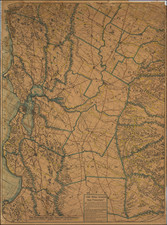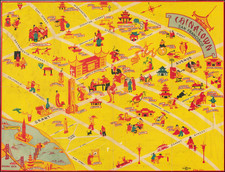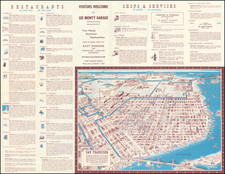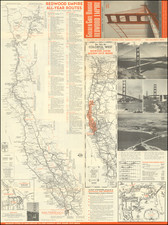Lithographic View of Horace M. Hawes and Caroline Hawes Redwood Farm by an Important African American Lithographer
Well executed lithograph of the Hawes Redwood Farm residence near Redwood City, by Grafton Taylor Brown, from Moore & De Pue's Illustrated History of San Mateo County.
The images shows the Hawes Redwood Farm 1 year prior to its subdivision in 1879.
Horace Hawes
Horace Hawes (1813-1871) was an educator, lawyer, international diplomat, local and state politician, who played a major role in the formation of San Francisco and wrote the first City Charter.
Born in New York, Hawes spent his year years in indentured servitude as a carpenter, before buying his freedom for $50 at the age of 16.
In 1835, Hawes took an active part in an Abolitionist discussion. In the late 1840s, President James K. Polk appointed him to be U.S. Consul to the South Sea Islands, and Hawes sailed around the Horn to visit Honolulu, San Francisco and Monterey. In 1849, he was appointed as Prefect of the District of San Francisco, and he was later the District Attorney charged with prosecuting the "Hounds," a gang of hoodlums in San Francisco. In 1855, Horace Hawes, Charles H. Gough (Gough Street) and Michael Hayes (Hayes Street) were authorized to lay out the streets in the Western Addition of San Francisco. In 1856, Hawes was elected to the California Assembly, introducing the Consolidation Act to clean up San Francisco politics.
In 1857, Hawes bought land in what is now Redwood City, including the area of the present campus of Sequoia High School. He built a home, calling it "Redwood Farm," and lived there until he died. The entrance was on El Camino Real. Hawes was also instrumental in founding the Union Cemetery when he objected to burials taking place on his property, and contributed to the establishment of the proper cemetery elsewhere.
On May 24, 1858, he married Caroline Combs and they had two children, a boy and a girl.
Hawes was described as being suspicious and eccentric by nature. His health started to fail him, and some sources claim his eccentricity was carried to the point of insanity. Others dispute this. It is said that he suspected his wife of plotting to kill him. Ten days before his death, he deeded most of his property to establish "Mount Eagle University" and a trade school. His wife had the deed of trust broken due to his not being of sound mind at the time he wrote it. T
His widow erected a 7 foot tall red Scottish granite memorial for him. His will had directed that in 100 years, a different monument was to replace it. She challenged this directive, stating that he was not in sound mind when he made it, for there was no provision to ensure this future act. Caroline sold the 600 acres to a sub-divider May 12, 1879 and moved to Folsom Street in San Francisco after expending her fortune on her friends and family.
G.T. Brown
Grafton Tyler Brown is perhaps the first and unquestionably the most famous African American artist and lithographer to depict California and the Pacific Coast. Born in Harrisburg, Pennsylvania, February 22, 1841, Brown moved to San Francisco at the age of 20 and learned the art of lithography from C. C. Kuchel. In 1861 and again in 1864, Brown created the two earliest bird's eye views of Virginia City. At the age of 26, he established his own firm, G.T. Brown & Co.
Brown produced skillfully illustrated bank notes, labels, and maps, and stock certificates for Wells Fargo, Levi Strauss and Co., and several mining companies. His significant lithographic production, The Illustrated History of San Mateo County (1878), featured 72 views of the county's communities and ranches. Brown traveled throughout Oregon, Washington, Idaho, Wyoming, Nevada, and British Columbia (where he settled in 1882), producing maps and illustrations, including many landscape paintings.
In 1893, Brown secured employment as a draftsman at the St. Paul, Minnesota office of the U.S. Army Corps of Engineers. Sometime during his St. Paul years he married Elberta Brown. Brown's work with the Corps of Engineers ended in December 1897, after which he worked in the civil engineering department of the city of St. Paul until 1910. He died on March 3, 1918, in Nicollet County, Minnesota, bringing to a close a rich and varied career as an artist and illustrator of the American West.









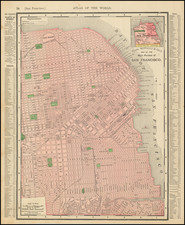
![[ Berkeley ] The Map of Berkeley Streets & Shops](https://storage.googleapis.com/raremaps/img/small/102774.jpg)
